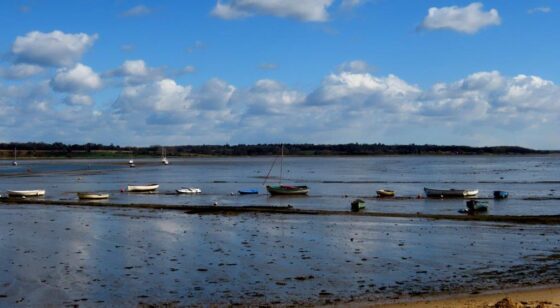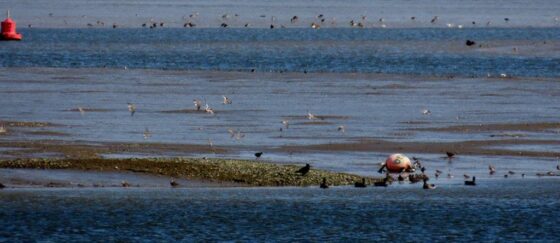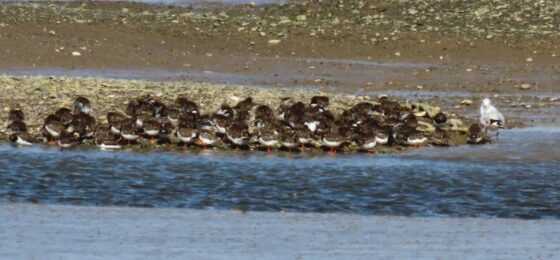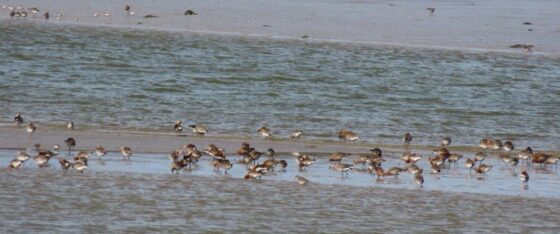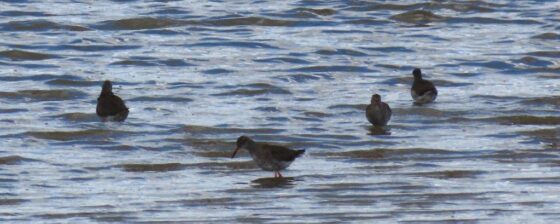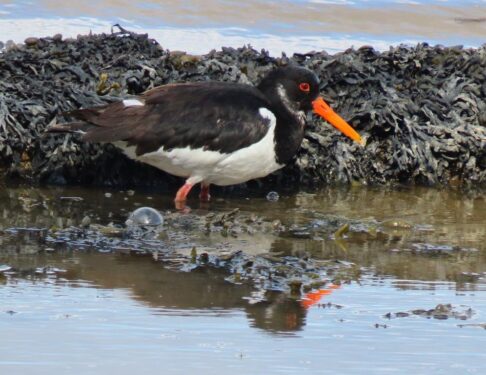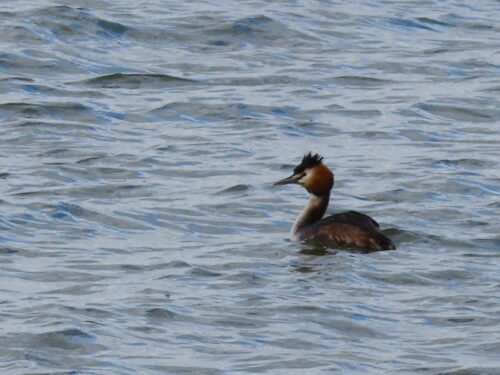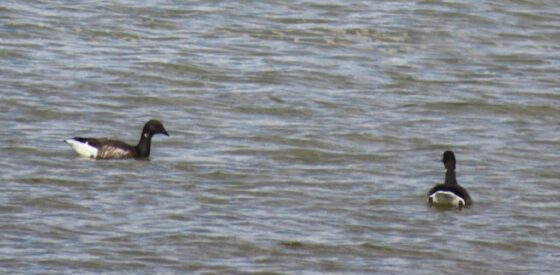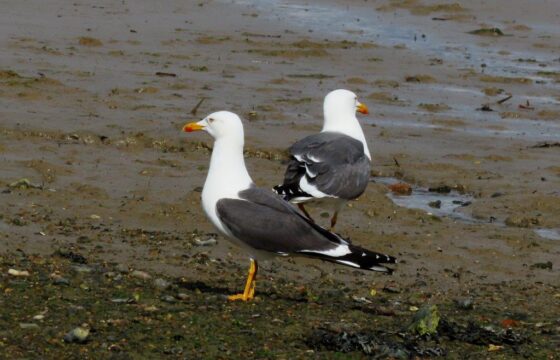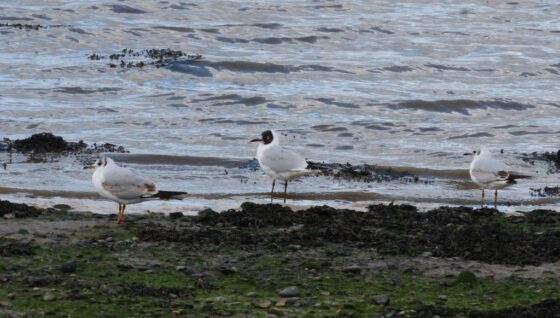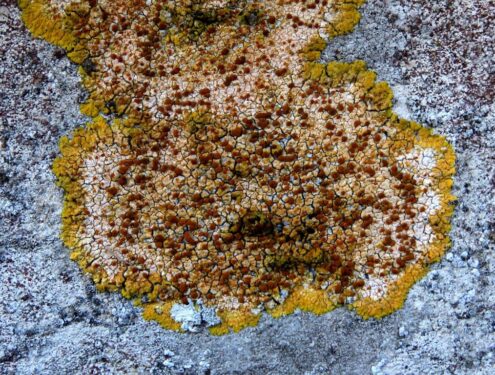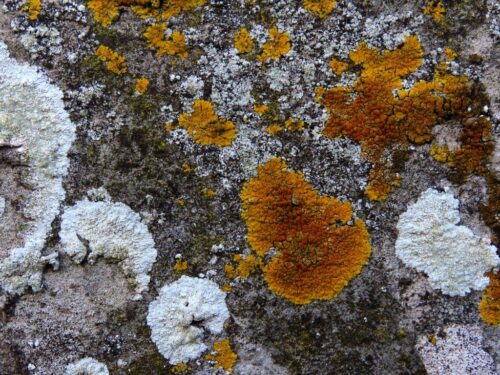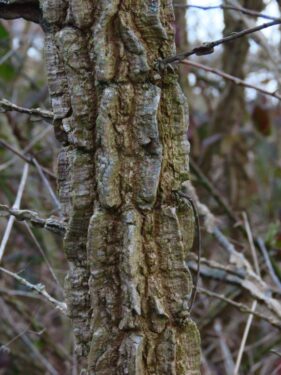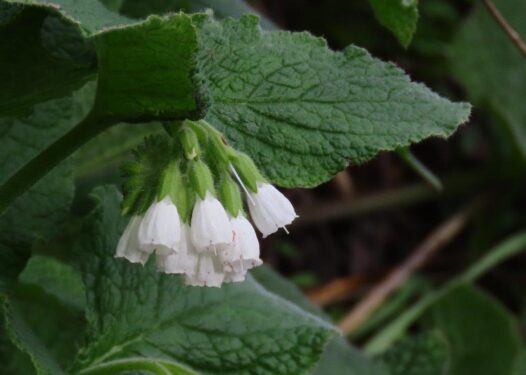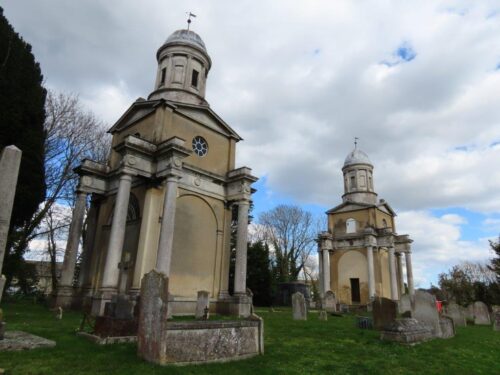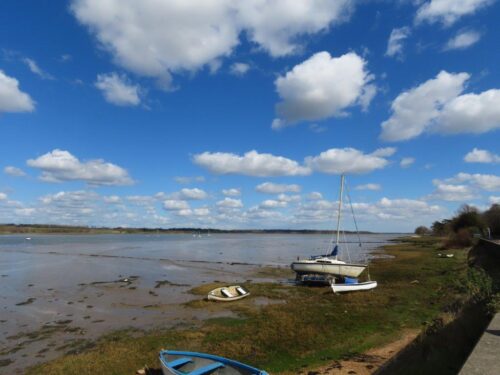A sunny day sandwiched between rain, rain and more rain – we were so lucky that our Mistley bird walk turned out to be then! So lovely to be out in the sunshine, though we were all glad of our gloves and hats as the wind was keen (as Jude’s Mum would have said!).
We kicked off with lunch in The Crown pub which coped with our various dietary requirements admirably – this place seems to be going up in the world with some refurbishments inside and out. It really is the perfect spot to eat and enjoy views of the estuary, right over to Brantham and Holbrook. Restaurant | The Crown Manningtree | Manningtree
Our walk followed the banks of the Stour from Manningtree to Mistley, looking at the bird life being pushed up to us on the rising tide. The numbers of birds were perhaps not as many as we had hoped for – why was this? Well, possibly we were slightly late in the season, the cold weather definitely a factor, and worryingly perhaps bird flu has taken a toll. We sadly saw a dead gull on the shore. ‘Social distancing’ isn’t something birds would know about, and Mistley can be a ‘’go to’ gathering place for our feathered friends.
We saw the usual waders, all uniquely equipped with different bill- and leg-lengths enabling them to forage for different goodies in the mud: Black-tailed Godwits (many starting to moult into russet summer plumage), Redshanks, Turnstones, Dunlins and Avocets, with a lone Oystercatcher pecking about in the confines of the old outdoor swimming pool.
Various kinds of duck floated by, including Teals, Shelducks and Mallards, and a couple of Great Crested Grebes with their weird and wonderful head adornments dived for lunch in the deeper waters of the Port as we looked on. Our local celebrity species, Dark-bellied Brent Geese were visible both out on the water in number and nearer the shore in small groups. Each estuary of the Essex coast is internationally important for these charming little geese, together supporting a fifth of the entire world population, breeding in high Arctic Siberia.
Gulls provided entertainment with their squawks and antics. Lesser Black-backed Gulls (particularly handsome birds in our opinion) were demonstrating courtship behaviour; Black-headed Gulls acquiring their ‘black’ heads (actually brown) to make themselves look even more beautiful; Herring Gulls with their customary cries and scuffles for food.
In the Mistley Towers grounds Blackbirds were seen and Robins heard. A Chiffchaff sang its onomatopoeic song, reminding us that Spring really is here (despite the chill wind, and forecast overnight frost!). But as our regulars know, birds are only a small part of what we are about – and other aspects of nature were noticed and enjoyed: Holm Oak leaf-miners patterning the leaves; lichens in many different forms on tree trunks and on the ancient wall of Hopping Bridge; the corky bark growth of Elm; and a smattering of plants including Sweet Violet, Red Dead-nettle and White Comfrey being particularly interesting. Few actual insects were seen apart from a 7-spot Ladybird, though of course the leaf mines were showing evidence of mass insect activity, the adult moths to come later in the summer.
The whole area of the Mistley Walls is historic and interesting – well worth a visit. The Towers, designed by Robert Adam, proudly demonstrate the wealth that was Mistley. The church constructed between the towers is now long dismantled, but the structures themselves were retained as seamarkers for vessels approaching the port. Nowadays the quay area is rather sad, all fenced off (despite ‘Free the Quay’ campaigning for many years), but the local logistics company is clearly busy judging from the number of large lorries in and out. These vehicles no doubt contribute to the rather overwhelming volume of traffic along the Walls, bringing noise and pollution; although these factors were disturbing to we human beings, the resident (and many) local swans and geese seemed totally oblivious.
Ironically, it is these human intrusions that help to habituate the birds meaning the Walls are the best place to watch these normally shy creatures well anywhere on the Essex coast.
As always we were delighted that such a wonderful group of nature enthusiasts could join us and we look forward to the next WildEssex adventure…
